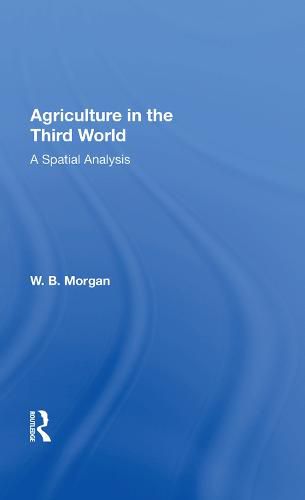Readings Newsletter
Become a Readings Member to make your shopping experience even easier.
Sign in or sign up for free!
You’re not far away from qualifying for FREE standard shipping within Australia
You’ve qualified for FREE standard shipping within Australia
The cart is loading…






… we do not yet seem to have realised that the exchange of products between countries in one part of the world but at different stages of development is no less natural, and no less profitable for the various nations, than the exchange of products which differ because they grow in different climates’ (Thiinen-Hall, xg66, p. 194). There have been few attempts to study agriculture within a spatial framework, notwithstanding the quintessential importance of land as a production factor. Land is most often treated as generalized environment although it could also be considered as social and economic space-social because even the most crowded of farming communities has much greater distance between its basic social units than exist within an urban-industrial agglomeration, and economic because distances to markets, to factor sources and to information must be overcome and frequently vary by type of market, factor and information source. Modem agricultural geography has been largely preoccupied with the development of techniques and with classification, often as ends in thexnselves, or with a geographical element consisting mainly of some general locational reference or regional description. Rarely has there been an attempt to identify a spatial structure associated with some particular agricultural enterprise* or practice.
$9.00 standard shipping within Australia
FREE standard shipping within Australia for orders over $100.00
Express & International shipping calculated at checkout
… we do not yet seem to have realised that the exchange of products between countries in one part of the world but at different stages of development is no less natural, and no less profitable for the various nations, than the exchange of products which differ because they grow in different climates’ (Thiinen-Hall, xg66, p. 194). There have been few attempts to study agriculture within a spatial framework, notwithstanding the quintessential importance of land as a production factor. Land is most often treated as generalized environment although it could also be considered as social and economic space-social because even the most crowded of farming communities has much greater distance between its basic social units than exist within an urban-industrial agglomeration, and economic because distances to markets, to factor sources and to information must be overcome and frequently vary by type of market, factor and information source. Modem agricultural geography has been largely preoccupied with the development of techniques and with classification, often as ends in thexnselves, or with a geographical element consisting mainly of some general locational reference or regional description. Rarely has there been an attempt to identify a spatial structure associated with some particular agricultural enterprise* or practice.